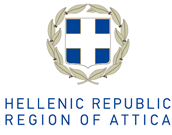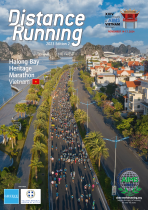Features
04 July 2017, 7am
Upward and onward
Thunder Dragon Marathon
Sun 28 May 2017
At some point in most marathons you question why you ever put your name down to run. In Bhutan’s Thunder Dragon Marathon that point comes at around 30km. That’s where the route, which climbs and falls up and down the Paro Valley from the first kilometre, takes another turn upwards.
And this time it doesn’t seem to come back down again; it snakes away over the horizon into the distance. It’s not the steepest climb in the race but it’s long, persistent and high.
Paro, a small town at the eastern edge of the Himalaya sits at a height of 2200m but much of the route of the Marathon weaves through the hills surrounding the town between 2300–2600m. That may not sound like a big difference but you notice it when you are running uphill.
Your pace slows, your heart rate jumps and your energy drains way at an alarming rate. There is a desperation about breathing at these heights: it feels like someone has their hand over your mouth and it is difficult to maintain anything like a consistent pace. That’s if you can run at all, but there are worse places in the world to be walking uphill.
The tiny Kingdom of Bhutan, squeezed between the Asian superpowers of China and India, is a Himalayan wonderland. It is a country about the size of Switzerland but less populated, geographically more impressive and more exclusive and exotic.
The land of the Thunder Dragon, named for the large and violent thunder storms which rip through the valleys of this rugged mountainous land is a mystical world of the old and the new. It’s a place where luxurious five-star hotels and celebrity tourists co-exist effortlessly with weather-beaten agricultural workers and crimson-robed monks chanting the sutras inside gold-topped temples perched miraculously on the side of cliffs. Geographically it is one of the world’s last biodiversity hotspots: still heavily forested and a refuge for some of the planet’s rarest mammals including the golden Langur, the snow leopard and the Asiatic black bear.
Although the country has modernised rapidly in the last 30 years it is still largely non-commercial, unspoilt and little-visited. It is not an easy country to access. There is only one international airstrip in Bhutan, a relatively short one, squeezed into the Paro Valley and the few pilots who are qualified to land there have to twist and corkscrew their planes through the mountains to reach it.
The bigger obstacle is political: the Bhutanese government puts annual limits on tourists, blocks all independent travellers and insists everyone pays a fixed daily fee, which starts at $250, to cover all their expenses while in the country. As a consequence, nearly all the the tourists are affluent, middle-aged Chinese, Americans or Europeans, which by happy coincidence closely matches the demographic for marathon running. Not that many people come here to run.
If there is an exclusivity about visiting Bhutan, then it is doubly so for running a marathon in the country. Despite its contented population life in this Himalayan Kingdom is still hard with the majority eking out a tough living off the land. The idea of running for leisure is an oddity and a luxury few can afford.
That is changing slowly in small part due to the Thunder Dragon Marathon. The race was first held in 2007 but has only been run annually for the last three years. The event is a collaboration between British company 2:09 Events and Bhutanese travel business Blue Poppy Tours. Its goals are twofold: to expose international runners to the wonders of Bhutan and to expose the Bhutanese to the joys of running. It is slowly making progress with both. The $200 race entry fee paid by the international runners subsidizes the local field, covering their cost of transport to the race, cash prizes for top performers and an elaborate post-race awards ceremony and meal where medals and certificates are awarded to all finishers.
The first time the race was run there were no Bhutanese runners. This year two thirds of the finishers, which included eleven nations across the full and half-marathons, were Bhutanese including 37 local women who completed the half distance.
The leading Bhutanese woman in the half marathon this year, 21-year old Chimi Dema, ran 1:53:26 – 20 minutes quicker than in 2016 – to finish second behind Finland’s Heidi Makinen. Local runners were even more successful in the marathon taking all top ten places with Sangay Wangchuk’s winning time being more than an hour faster than Britain’s Cedric Clemerson, the leading international runner. Most of the international marathon runners said they were more than an hour slower than they would have been on a comparable course at sea level.
That was expected. The second half of the race, with more single-track forest trails, more hills and higher altitude, was tougher than the first. Many struggled and had brief moments of self-doubt but no one was overly worried about their times. Bhutan is not a place to run a personal best. In fact, to run the Thunder Dragon Marathon too quickly would be to miss much of its appeal.
Some of that appeal is pure tourism as you run past famous landmarks, such as Paro’s fortress-like Dzong in the middle of town or the sacred Taktsang (Tiger’s Nest) monastery visible in the distance perched majestically on top of a 1000m cliff. But it’s the ordinary extraordinary sights and experiences that are more memorable: trying to squeeze past an awkward cow on a single-track forest trail; running beside a group of giggling schoolgirls immaculately dressed in their national costume; or marveling at a farmer trying to plough a field by hand. Your legs and feet might hurt for a few days after you cross the finish line but you will not ever regret having put your name down to run the Thunder Dragon Marathon.
Result
marathon
Men
| 1 | Sangay | WANGCHUK | BHU | 3:18:07 |
| 2 | Nima | DORJI | BHU | 3:29:36 |
| 3 | Tashi | NORBU | BHU | 3:32:10 |
| 4 | SANGAY | BHU | 3:44:12 | |
| 5 | Kinley | TENZIN | BHU | 3:56:31 |
Women
| 1 | Annett | ROTH | GER | 5:31:00 |
| 2 | Catherin | SUN | CHN | 6:05:40 |
| 3 | Susan | GEORGE | AUS | 6:50:08 |
| 4 | Marlee | GEORGE | AUS | 6:50:11 |
Half marathon
Men
| 1 | Mike | GRATTON | GBR | 1:39:47 |
| 2 | Jeff | ADAM | USA | 2:10:15 |
| 3 | Goffrey | WILSON | GBR | 2:16:20 |
Women
| 1 | Heidi | MAKINEN | FIN | 1:41:26 |
| 2 | Chimi | DEMA | BHU | 1:53:26 |
| 3 | Tandin | LHAMO | BHU | 1:59:30 |







